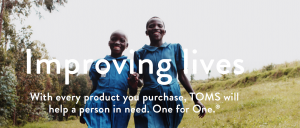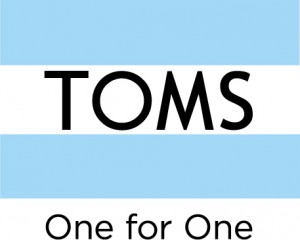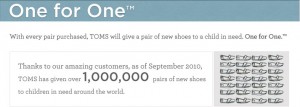Toms Shoes innovated a new business model, which is called “one-for-one” a couple years ago. Toms Shoes promises that the company will send somebody a pair of free shoes if a customer bought one from the company. Besides, supervisors of Toms Shoes believe that this program can give a hand to poverty.
(Picture1:The slogan from Toms Shoes’s website)
(Picture2)
Actually, lots of people support and agree with this model because they believe that Toms Shoes is not only concerned about how many profits the company can earn, but also shows its empathy and help those people who need help. On the other way, the company also creates more values because a lot of consumers enjoy this innovative and meaningful model and also want to help others by their own strengths.
(Picture3)
As far as I am concerned, this model of Toms Shoes can only help to reduce the degree of poverty but cannot help to solve poverty problems. Like Michael Matheson Miller (director of PovertyCure) says, “When you give free things, why would you buy local shoes?” (The One-for-one Business Model) As we know, it is better to teach someone how to catch a fish rather only give him a fish. It is true that some poor families can save some money because Toms Shoes’s model, but it is only a small part of the whole society. On my opinion, Toms Shoes can help to address the poverty problem on the other ways, as an illustration, the company can use the money to let more people have opportunities to get education instead of producing shoes for them. The company can also teach those people the skills of making shoes and might offer some jobs to them.
(Picture4)
As I mentioned above, the best way to solve the poverty problems is not giving poor people money. The best way is to teach them knowledge and skills to make sure that they have abilities to change them life by themselves.
News Links:
The One-for-one Business Model: Avoiding Unintended Consequences
Pictures’s Links:



